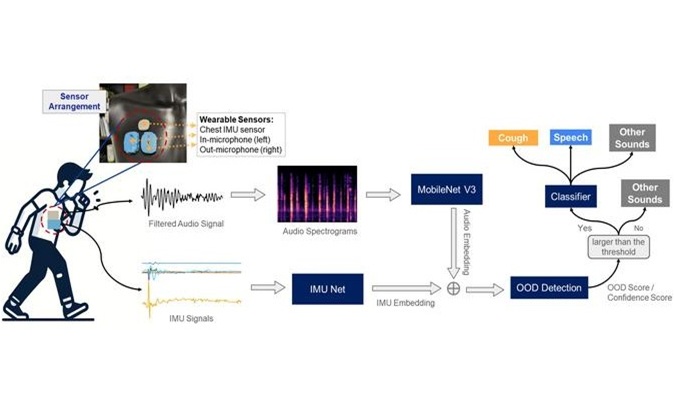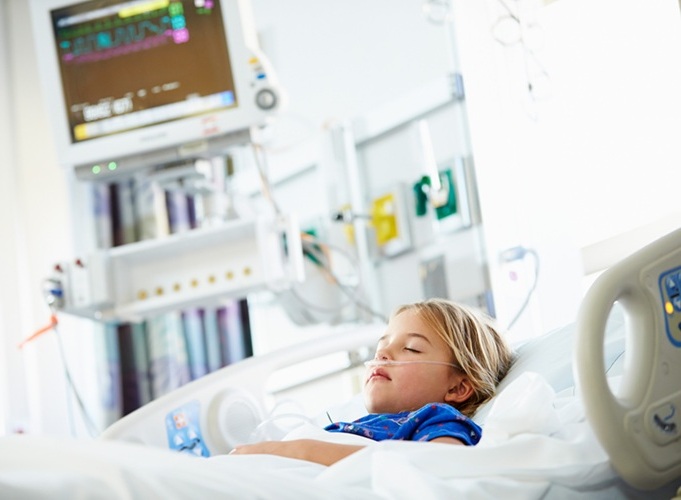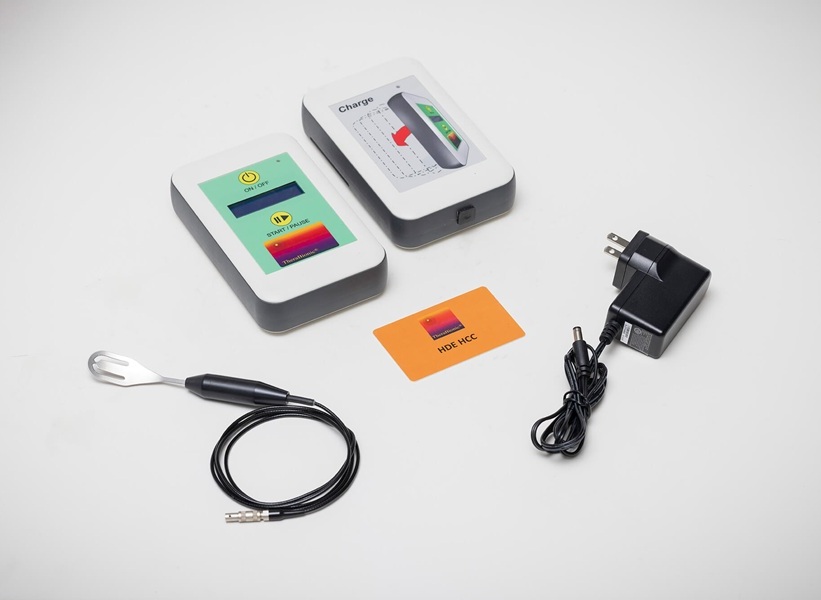Tele-ICU Supports Improved Patient Care
|
By HospiMedica International staff writers Posted on 10 Aug 2011 |
A new study shows that using a tele-intensive care unit (tele-ICU) favorably affects hospital mortality, length of stay, best practice adherence, and preventable complications.
Researchers at the University of Massachusetts Medical School (UMMS; Worcester, USA) conducted a prospective pre- and post-study of 6,290 adults admitted to any of 7 ICUs (3 medical, 3 surgical, and 1 mixed cardiovascular) on two campuses of an academic medical center from April 2005 through September 2007. Electronically supported and monitored processes for best practice adherence, care plan creation, and clinician response times to alarms were evaluated. The main outcome measures were case-mix and severity-adjusted hospital mortality; other outcomes included hospital and ICU length of stay, best practice adherence, and complication rates.
The results showed that the hospital mortality rate was 13.6% during the preintervention period, and 11.8% during the tele-ICU period. The tele-ICU intervention period was also associated with higher rates of best clinical practice adherence for cardiovascular protection and prevention of deep vein thrombosis (DVT), stress ulcers, and ventilator-associated pneumonia (VAP), resulting in lower rates of preventable complications. Patients in the tele-ICU period had shorter hospital lengths of stay (9.8 versus 13.3 days), and the results were comparable for medical, surgical, and cardiovascular ICUs.
"It's a very, very, strong clear signal that tele-ICU technology works. Places that are giving pretty good critical care can produce even better critical care with it,” said lead author Craig Lilly, MD, director of the Tele-ICU program at UMMS. “The system leverages technology as well as clinical expertise to provide expert care at 3 am. The problem is, you just can't be there 24/7 because you've got to sleep, and you've got a family.”
The off-site tele-ICU team, which included an intensivist, had the ability to communicate with bedside clinicians or directly manage patients by recording clinician orders for tests, treatments, consultations, and management of life-support devices. Among the responsibilities of the team were reviewing the care of individual patients; performing real-time audits of best practice adherence; monitoring system-generated electronic alerts; auditing bedside clinician responses to in-room alarms; and intervening when the responses of bedside clinicians were delayed and patients were deemed physiologically unstable.
Related Links:
University of Massachusetts Medical School
Researchers at the University of Massachusetts Medical School (UMMS; Worcester, USA) conducted a prospective pre- and post-study of 6,290 adults admitted to any of 7 ICUs (3 medical, 3 surgical, and 1 mixed cardiovascular) on two campuses of an academic medical center from April 2005 through September 2007. Electronically supported and monitored processes for best practice adherence, care plan creation, and clinician response times to alarms were evaluated. The main outcome measures were case-mix and severity-adjusted hospital mortality; other outcomes included hospital and ICU length of stay, best practice adherence, and complication rates.
The results showed that the hospital mortality rate was 13.6% during the preintervention period, and 11.8% during the tele-ICU period. The tele-ICU intervention period was also associated with higher rates of best clinical practice adherence for cardiovascular protection and prevention of deep vein thrombosis (DVT), stress ulcers, and ventilator-associated pneumonia (VAP), resulting in lower rates of preventable complications. Patients in the tele-ICU period had shorter hospital lengths of stay (9.8 versus 13.3 days), and the results were comparable for medical, surgical, and cardiovascular ICUs.
"It's a very, very, strong clear signal that tele-ICU technology works. Places that are giving pretty good critical care can produce even better critical care with it,” said lead author Craig Lilly, MD, director of the Tele-ICU program at UMMS. “The system leverages technology as well as clinical expertise to provide expert care at 3 am. The problem is, you just can't be there 24/7 because you've got to sleep, and you've got a family.”
The off-site tele-ICU team, which included an intensivist, had the ability to communicate with bedside clinicians or directly manage patients by recording clinician orders for tests, treatments, consultations, and management of life-support devices. Among the responsibilities of the team were reviewing the care of individual patients; performing real-time audits of best practice adherence; monitoring system-generated electronic alerts; auditing bedside clinician responses to in-room alarms; and intervening when the responses of bedside clinicians were delayed and patients were deemed physiologically unstable.
Related Links:
University of Massachusetts Medical School
Channels
Critical Care
view channel
Origami Robots to Deliver Medicine Less Invasively and More Effectively
Delivering medicine to ulcers or other internal sites often requires invasive procedures that can disrupt surrounding tissues and lengthen recovery times. Traditional magnetic actuators used in soft robotics... Read more
Improved Cough-Detection Technology Aids Health Monitoring
Coughing serves as an important biomarker for tracking a variety of conditions and can help monitor the progress of respiratory diseases or predict when someone’s asthma is being exacerbated.... Read moreSurgical Techniques
view channel
Novel Glue Prevents Complications After Breast Cancer Surgery
Seroma and prolonged lymphorrhea are among the most common complications following axillary lymphadenectomy in breast cancer patients. These postoperative issues can delay recovery and postpone the start... Read more
Breakthrough Brain Implant Enables Safer and More Precise Drug Delivery
Delivering medication directly to specific regions of the brain has long been a major challenge in treating neurological disorders. Current implants and infusion systems typically reach only one or two... Read morePatient Care
view channel
Revolutionary Automatic IV-Line Flushing Device to Enhance Infusion Care
More than 80% of in-hospital patients receive intravenous (IV) therapy. Every dose of IV medicine delivered in a small volume (<250 mL) infusion bag should be followed by subsequent flushing to ensure... Read more
VR Training Tool Combats Contamination of Portable Medical Equipment
Healthcare-associated infections (HAIs) impact one in every 31 patients, cause nearly 100,000 deaths each year, and cost USD 28.4 billion in direct medical expenses. Notably, up to 75% of these infections... Read more
Portable Biosensor Platform to Reduce Hospital-Acquired Infections
Approximately 4 million patients in the European Union acquire healthcare-associated infections (HAIs) or nosocomial infections each year, with around 37,000 deaths directly resulting from these infections,... Read moreFirst-Of-Its-Kind Portable Germicidal Light Technology Disinfects High-Touch Clinical Surfaces in Seconds
Reducing healthcare-acquired infections (HAIs) remains a pressing issue within global healthcare systems. In the United States alone, 1.7 million patients contract HAIs annually, leading to approximately... Read moreBusiness
view channel
Philips and Masimo Partner to Advance Patient Monitoring Measurement Technologies
Royal Philips (Amsterdam, Netherlands) and Masimo (Irvine, California, USA) have renewed their multi-year strategic collaboration, combining Philips’ expertise in patient monitoring with Masimo’s noninvasive... Read more
B. Braun Acquires Digital Microsurgery Company True Digital Surgery
The high-end microsurgery market in neurosurgery, spine, and ENT is undergoing a significant transformation. Traditional analog microscopes are giving way to digital exoscopes, which provide improved visualization,... Read more
CMEF 2025 to Promote Holistic and High-Quality Development of Medical and Health Industry
The 92nd China International Medical Equipment Fair (CMEF 2025) Autumn Exhibition is scheduled to be held from September 26 to 29 at the China Import and Export Fair Complex (Canton Fair Complex) in Guangzhou.... Read more














